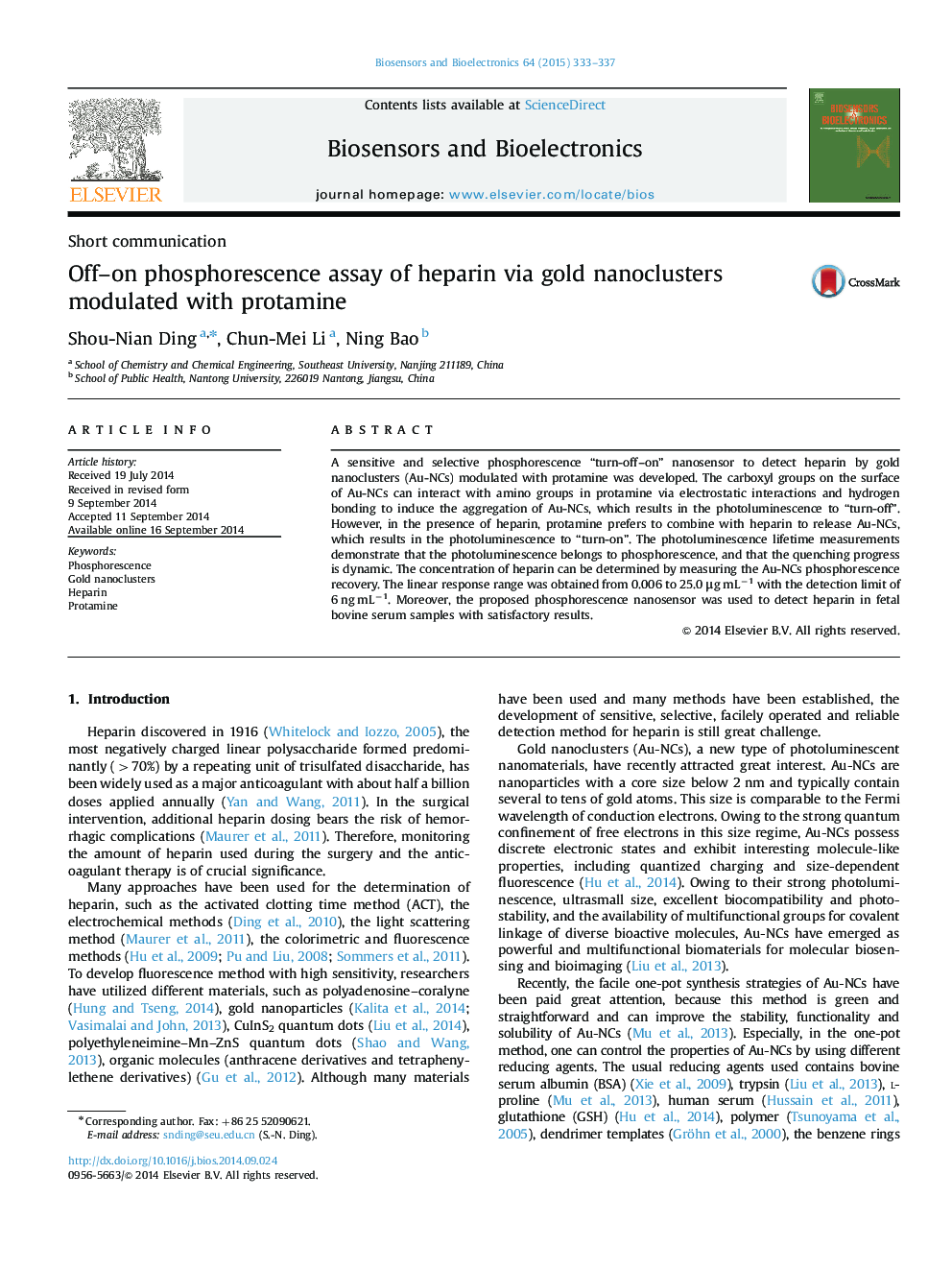| Article ID | Journal | Published Year | Pages | File Type |
|---|---|---|---|---|
| 7233304 | Biosensors and Bioelectronics | 2015 | 5 Pages |
Abstract
A sensitive and selective phosphorescence “turn-off-on” nanosensor to detect heparin by gold nanoclusters (Au-NCs) modulated with protamine was developed. The carboxyl groups on the surface of Au-NCs can interact with amino groups in protamine via electrostatic interactions and hydrogen bonding to induce the aggregation of Au-NCs, which results in the photoluminescence to “turn-off”. However, in the presence of heparin, protamine prefers to combine with heparin to release Au-NCs, which results in the photoluminescence to “turn-on”. The photoluminescence lifetime measurements demonstrate that the photoluminescence belongs to phosphorescence, and that the quenching progress is dynamic. The concentration of heparin can be determined by measuring the Au-NCs phosphorescence recovery. The linear response range was obtained from 0.006 to 25.0 μg mLâ1 with the detection limit of 6 ng mLâ1. Moreover, the proposed phosphorescence nanosensor was used to detect heparin in fetal bovine serum samples with satisfactory results.
Related Topics
Physical Sciences and Engineering
Chemistry
Analytical Chemistry
Authors
Shou-Nian Ding, Chun-Mei Li, Ning Bao,
